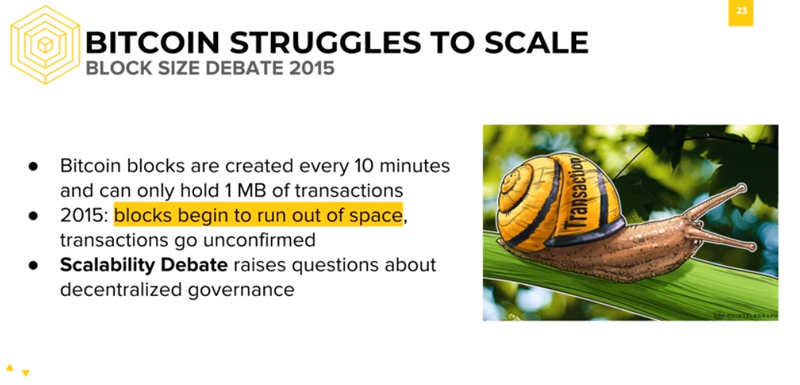
One issue that has been the topic of much debate is that of scalability.
Scalability refers to the ability of a technology to be used by increasing numbers of people. In the context of Bitcoin, it refers to the number of transactions that the network can confirm in a certain amount of time.
As of March 2018, Bitcoin blocks are created every 10 minutes and can only hold 1MB of transactions, which is about one to three thousand transactions per block. Thus, we can estimate that the Bitcoin blockchain can process about three transactions a second.
In 2015, the transaction volume exceeded the network’s capacity so much that blocks actually began to run out of space, meaning that transactions were left unconfirmed, left without being included in a block. This led to proposals like Bitcoin XT, Bitcoin Classic, Segregated Witness (commonly abbreviated as SegWit), and more recently, SegWit2x in order to improve the network’s transaction processing capacity.
Some of these proposals rely on increasing the block size in order to fit more transactions, while other ones modify the underlying protocol. Each of these solutions have their pros and their cons, but I will not discuss them in too much detail right now.
The important thing to understand right now are the questions that the scalability debate raises about decentralised governance.
For example: what do we do when we want to change Bitcoin?
Governance is the mechanism by which a protocol makes changes to itself, but no such mechanism was encoded into the Bitcoin protocol. Instead, users introduce proposals called BIPs, or Bitcoin Improvement Proposals, outside of the Bitcoin network, on forums and online discussion boards, and then the community votes ad hoc on whether or not they want to go through with that change.

Members can't directly propose and vote on updates to Bitcoin within the actual software, but at least the current mechanism gets the job done.
Comments